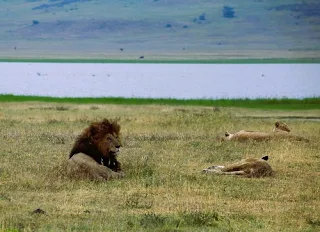Early History of Mainland Tanzania
Tanzania's history from hunter-gatherers, ironworking, agriculture and Zanzibar's independence.
The earliest inhabitants of mainland Tanzania were hunter-gatherers, to whom some of its contemporary peoples may have possible connections.
Scholars have proposed that these early inhabitants were part of a broader group known as Khoisan-speaking peoples.
Many of these groups had resided in southern and southwestern Africa for centuries, where European observers later referred to them as Bushmen and Hottentots.
Interestingly, in north-central Tanzania, the Sandawe and Hadzabe are believed to be descendants or remnants of these early inhabitants.
Tanzania's first millennium B.C
As we enter the early years of the first millennium B.C., certain areas within the Rift Valley of Kenya and northern Tanzania were inhabited by cattle-herding people.
These folks relied on stone tools, including bowls, for their way of life, and they bore a resemblance to the Cushitic-speaking peoples found in the Horn of Africa, which includes regions like Ethiopia and Somalia.
This historical connection sheds light on the ancient interactions and migrations of different cultures across the African landscape.
At some point during the initial centuries of the first millennium A.D., small groups of people who had knowledge of using iron and were familiar with agricultural practices made their way into Tanzania and various other regions within eastern and central Africa.
This marked a significant development in the area's history, as the introduction of iron and agricultural techniques had a profound impact on the societies and cultures of the region.
On the mainland, a distinct history had unfolded over an extended period as various linguistic, cultural, and physical differences characterized the people.
As the second millennium dawned, Tanganyika's landscape was primarily shaped by communities who spoke Bantu languages, utilized iron tools and relied predominantly on agriculture for their sustenance.
Their way of life was complemented by hunting, gathering, and fishing to meet their various needs. This evolution in Zanzibar and Tanganyika's cultural and economic landscapes marked a crucial chapter in the region's history.
Zanzibar second millennium B.C
Around 1001 A.D., Zanzibar stood among several coastal and island city-states deeply connected to the Indian Ocean trade. These vibrant city-states embraced Islamic culture and were home to a diverse population, primarily composed of Afro-Arab heritage.
As the late eighteenth century unfolded, Zanzibar assumed a prominent role as the center of the Omani dynasty. By the early nineteenth century, the island was primarily characterized by clove plantations owned by Arabs, heavily reliant on slave labor. This economic setup also extended its influence to Pemba, another island nearby.
Before long, Zanzibar and its associated territories established robust trading connections, which included the unfortunate practice of the slave trade.
These direct and indirect links connected Zanzibar and its dependencies with various groups in the mainland's interior. This profoundly impacted mainland societies' economies and politics, shaping a significant chapter in the region's history.
Zanzibar Independence Groove
Although initially slow, the journey towards independence in Zanzibar gained momentum during the late 1950s and early 1960s.
However, the situation in Zanzibar and Pemba was quite complex, marked by a web of allegiances and hostilities that crossed racial, socioeconomic, and religious lines.
Ultimately, the Afro-Shirazi Party (ASP) managed to secure a popular majority, but when independence was granted in December 1963, a coalition of two minority parties held a parliamentary majority. This created a unique political landscape.
Then, in January 1964, a revolution took place, leading to the removal of the Arab-led coalition and the dissolution of the Sultanate.
This revolution marked a significant turning point in the history of Zanzibar, reshaping its political landscape and setting the stage for new developments in the region.
The aftermath of this revolution led to the establishment of the United Republic of Tanganyika and Zanzibar on April 26, 1964.
This union marked a significant chapter in the history of Africa and the journey toward self-determination and unity for these two distinct regions.
Tanzania's early history is captivating and diverse, showcasing many cultures. From its beginnings as a hunter-gatherer society to the transformative impacts of ironworking and agriculture, there have been dynamic interactions for thousands of years.
The emergence of Zanzibar as a trading hub and the challenges faced during the fight for independence have all contributed to the intricate life of Tanzania's past.





